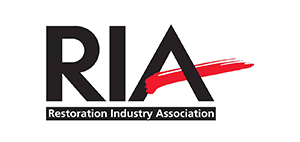As a homeowner in Springdale, Arkansas, water damage can be a costly and devastating experience. Water damage claims are among the most frequently filed with homeowner insurance policies, accounting for roughly one-fourth of total claims filed. However, filing an insurance claim for water damage can be a difficult and confusing process. That’s why Pruden Restoration, a water damage restoration company located in Springdale, is here to guide you through the process of filing a water damage claim with your homeowners’ insurance.
Contact Your Insurance Company
The first step in filing a water damage claim is to contact your insurance company. Notify them as quickly as possible, so they can expedite the processing of your claim. In addition, have photos or evidence readily available so they can accurately assess any damage sustained and ensure proper assessment.
After you contact your insurance provider, a meeting will take place with an adjuster to assess whether any damages are covered under your policy. If so, they will inspect the damaged area, taking photos and measurements before estimating how much the damage costs and issuing you with a check for that amount.
It’s crucial to keep a detailed record of your interactions with adjusters to have an accurate representation of what happened and was said. This can aid when filing claims later as additional documentation or agreeing on different adjusters may be requested from you.
Before having an insurance inspection completed, it would also be wise to relocate any belongings in the affected area until then. This will protect against further damage while decreasing how much money needs to be spent on repairs. If you hire a contractor for temporary repairs, save all receipts as this will form part of your total settlement agreement.
Document the Damage
When faced with water damage from leakage or flooding, it’s essential to document all damages immediately in order to expedite the claims process and provide evidence in support of your claim. This will expedite the entire process more quickly.
Photographing or videotaping any water damage and damaged items will assist your insurance provider when filing a claim. In addition, providing them with an updated home inventory should help them accurately value all your belongings prior to flooding.
When dealing with leaky appliances such as water heaters or washing machines, it is wise to keep records detailing when and how long the device has been leaking for. This will give your insurance provider an accurate picture of whether or not your problem constitutes a covered loss.
As soon as damage occurs, it’s advisable to have a plumber inspect the area and take photos or video footage of its severity. Furthermore, drying-up areas where there may be water or mold accumulation could help avoid further destruction to floors, walls and baseboards.
Once you have documented the damage, it’s time to file your insurance claim. This can be done online, over the phone, or through paper forms. Before filing your claim, contact your insurance agent or company and ensure you have all of the documentation needed. This will help ensure you get enough money to rebuild your home after flooding has struck and begin the recovery process more effectively.
Schedule an Inspection
Cleaning services insurance claims can be among the costliest types, as major repairs and restoration work often follow an incident. While it may seem daunting, making an accurate and fair claim is indeed possible with proper planning and execution.
Step one in filing a water damage claim is to reach out to your homeowner’s insurance provider and have an adjuster come and inspect your property. They may request photos and measurements to assess how extensive the damage may be.
Once they’ve assessed the damage, an adjuster will provide you with a written estimate of how much money it will cost to repair the property. They may ask questions regarding its cause and timing so as to accurately calculate repair costs.
Adjusters often ask if any temporary repairs have been completed on your property, so make sure to keep receipts for these works so you can submit them as invoices to your insurance provider and seek reimbursement from them.
If you are concerned about hidden water damage when purchasing a home, professional inspectors can perform an inspection to detect leaks or any other problems which might not be immediately visible to the naked eye. They have experience detecting problems which are otherwise undetectable by eye.
Inspectors often rely on infrared cameras to spot hidden water damage. The camera enables them to spot leaks not visible to the naked eye, potentially saving thousands in repairs if caught early enough.
As another way of avoiding hidden water damage, buying a house with a strong foundation and drainage system is also beneficial in protecting against future issues following repair of damage. These features may prevent further issues from emerging after any repair work has been completed.
Make a Claim
Once you have an exhaustive list of items needing repairs, be sure to gather any receipts possible as evidence of damages. A public adjuster could also assess and negotiate with insurers on your behalf.
In general, the claims process will go smoothly, and you should be reimbursed for any costs of damage sustained to your property. However, you should continue checking with your insurer regularly throughout this process to ensure everything is handled in an expedient manner.
Water damage can have far-reaching repercussions for your quality of life in more ways than one, from significant expenses and repairs to mold, mildew, and other health concerns that can be challenging to resolve. Mold can increase your insurance rates. Many insurance companies utilize a database called Comprehensive Loss Underwriting Exchange (CLUE) to calculate how much they should charge you for their policies.
Therefore, it’s crucial to act quickly when dealing with water damage and to follow the above steps when filing a water damage claim. By documenting damages, contacting your insurance provider, scheduling an inspection, and making a claim, you can ensure that the process goes smoothly and you get the necessary funds to repair your property.
Additionally, you can also seek assistance from relevant agencies such as National Flood Insurance Program (NFIP) to learn more about water damage restoration and insurance claims.
At Pruden Restoration, we understand that water damage can be a stressful and overwhelming experience for homeowners. That’s why we offer water damage restoration services in Springdale, Arkansas, and the surrounding areas. Our team of experts is available 24/7 to respond to your emergency and provide quick and efficient restoration services to prevent further damage to your property.
In conclusion, filing a water damage claim with your homeowners’ insurance is crucial when dealing with water damage in your property. By following the steps outlined above, you can ensure that the process goes smoothly and you receive the necessary funds to repair your property. Remember to act quickly, document damages, contact your insurance provider, schedule an inspection, and make a claim. And if you need water damage restoration services in Springdale, Arkansas, don’t hesitate to contact Pruden Restoration.










